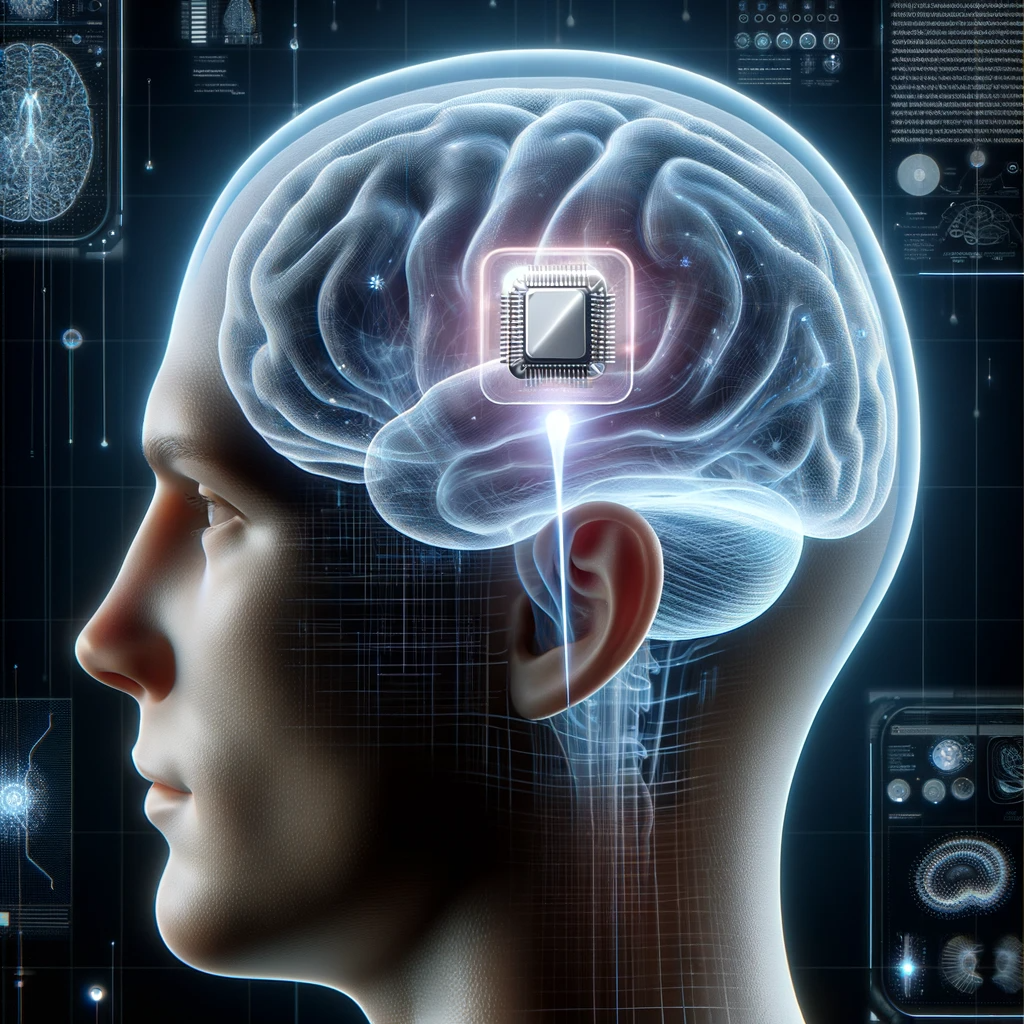News
1. Neuralink
The first human patient has received a brain-chip implant from Neuralink, the company founded by billionaire Elon Musk, and is reportedly recovering well. Musk stated that initial results show promising neuron spike detection, with the implant’s primary goal being to enable people to control computers or keyboards using their thoughts alone (Reuters).
2. Neuroscience
Researchers have utilized a neural probe, Neuropixels, to capture the activity of large populations of single neurons in the human cortex during speech perception and production, offering new insights into how speech is encoded at the neuronal level. These studies reveal that single neurons are tuned to groups of phonemes and demonstrate how the brain’s auditory and prefrontal cortices are involved in processing speech sounds and planning words, respectively, highlighting the complex neural mechanisms underlying speech (Nature).
3. Apple
The Apple Vision Pro, priced at $3,499, is Apple’s ambitious foray into “spatial computing,” aiming to augment reality by overlaying apps and information over the real world, making it a significant leap from traditional VR headsets. Despite its innovative features, including the ability to run familiar apps like Excel and watch movies on a virtual 4K HDR display, the Vision Pro comes with considerable trade-offs, such as its weight and the external battery pack, raising questions about the practicality of replacing conventional computing methods with this immersive experience (The Verge).
4. Alphabet
Google has updated its Bard chatbot to include AI image generation capabilities using the Imagen 2 text-to-image model, aiming to compete with OpenAI’s ChatGPT Plus which integrates DALL-E 3 for image creation. This feature, free for users unlike ChatGPT Plus’s subscription model, is part of Google’s broader initiative to enhance Bard, now powered by the Gemini Pro model, with responsible content generation measures and watermarking to indicate AI-generated images (The Verge).
Google introduces MobileDiffusion, a novel approach for sub-second text-to-image generation on mobile devices. MobileDiffusion, designed specifically for mobile deployment with a model size of just 520M parameters, leverages DiffusionGAN for one-step sampling during inference, enabling the generation of high-quality 512×512 images in half a second on iOS and Android devices (Google).
5. Amazon
Amazon has launched Rufus, an AI-powered personal shopping assistant integrated into its mobile app’s search bar, marking its entry into the consumer chatbot competition and aiming to enhance the online shopping experience. Rufus, named after a dog from Amazon’s early office days, aims to revolutionize how customers discover products by providing conversational assistance on product queries, with an initial release to a select group of customers and plans for a broader rollout (New York Times).
6. Machine learning
An AI model has successfully learned to recognize words like ‘crib’ and ‘ball’ by analyzing headcam recordings from a small portion of a baby’s life, challenging existing cognitive science theories about innate language knowledge in babies. This research, which utilized 61 hours of recordings from a baby named Sam, demonstrates the potential of AI to understand human learning processes by building associations between images and spoken words, offering new insights into early language acquisition (Nature).
Articles
1. Can This A.I.-Powered Search Engine Replace Google? It Has for Me (New York Times)
Kevin Roose explores the potential of Perplexity, an AI-powered search engine created by former OpenAI and Meta researchers, as a serious competitor to Google. Despite its imperfections, Perplexity’s ability to generate concise summaries with citations from a variety of sources for complex queries, alongside features like Copilot for query refinement and specialized searches, suggests AI-driven search engines could challenge Google’s dominance or push it to innovate further.
2. Why the auto industry still believes in hydrogen fuel-cell tech despite slow progress (Tech Brew)
Despite the rapid advancement of battery-electric vehicles, automakers like GM and Honda continue to invest in hydrogen fuel-cell technology, believing it holds potential for heavy-duty transportation due to its quick refueling times and lack of emissions. The technology, which converts hydrogen into electricity to power vehicles, faces challenges such as high costs and a lack of fueling infrastructure but is seen as a promising alternative for applications where battery-electric solutions are less viable.
3. How new magnets could accelerate climate action (MIT Tech Review)
Niron Magnetics is developing iron nitride magnets, a promising alternative to rare earth metal-based magnets, to address the looming shortage of materials needed for high-powered magnets in electric vehicles (EVs) and wind turbines. This innovation, derived from common elements, could significantly impact climate action by providing a more sustainable and widely available material for producing powerful permanent magnets, essential for various clean energy technologies.
4. The next generation of mRNA vaccines is on its way (MIT Tech Review)
The next generation of mRNA vaccines, including self-amplifying RNA (saRNA) vaccines, could offer significant improvements over current mRNA vaccines by requiring much lower doses and potentially inducing more durable immune responses. Japan’s recent approval of a novel saRNA COVID-19 vaccine, which includes a gene for replicase to enable the vaccine’s mRNA to replicate itself within the body, represents a major advancement in vaccine technology, promising enhanced efficacy and reduced side effects.







